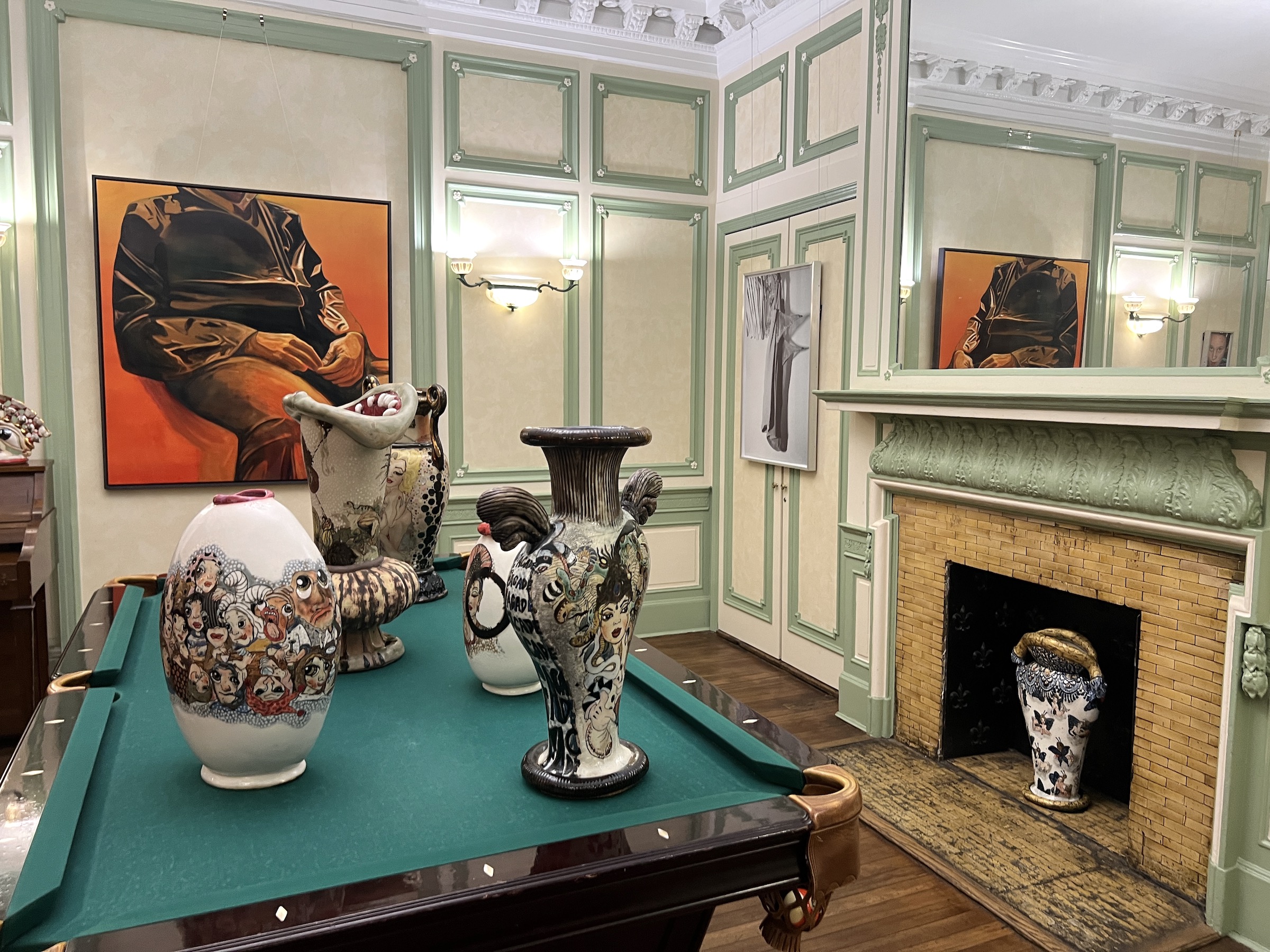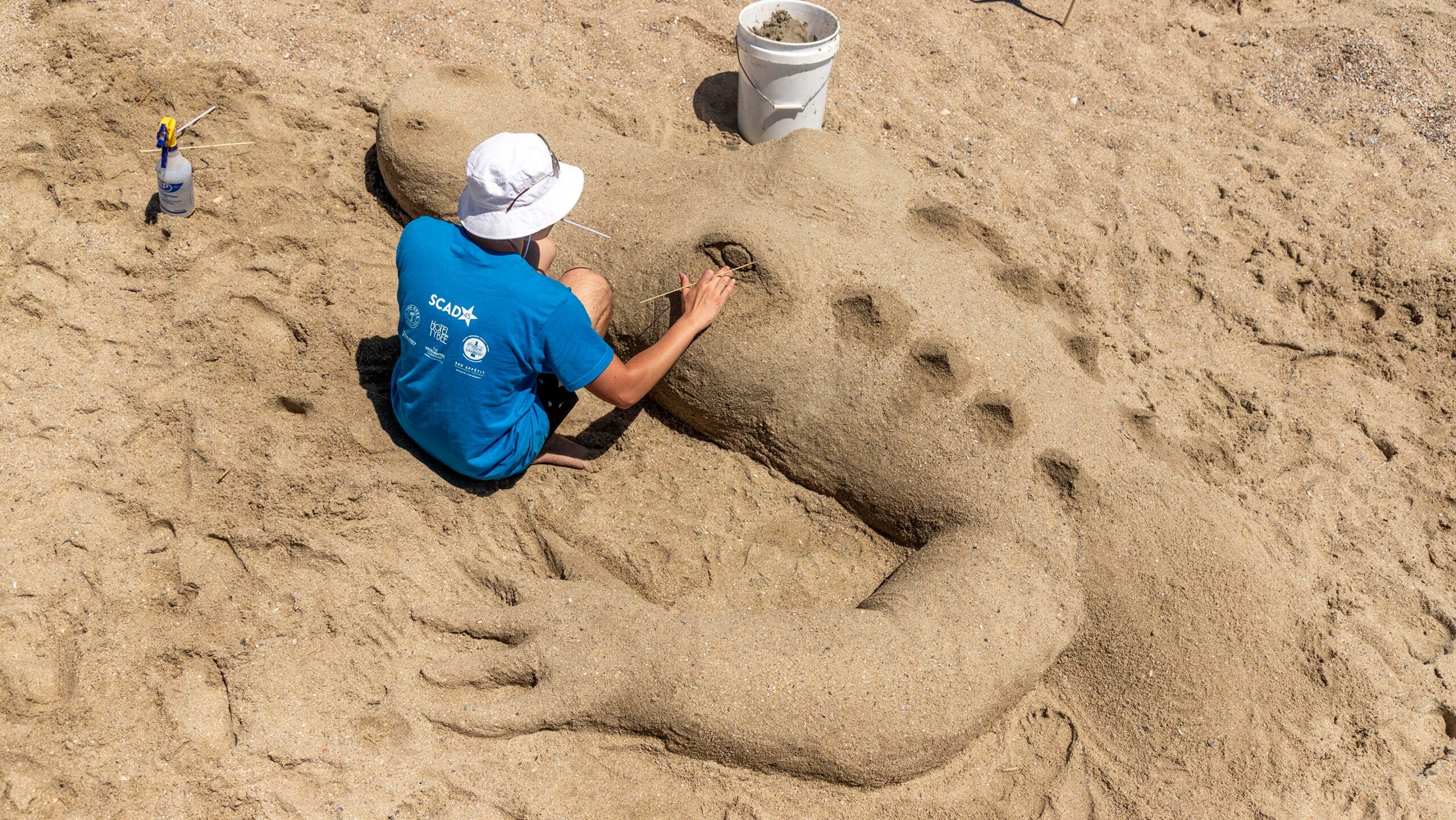An account has already been registered with this email. Please check your inbox for an authentication link to sign in.
As an independent publication, we rely on readers like you to fund our journalism and keep our reporting and criticism free and accessible to all. If you value our coverage and want to support more of it, consider becoming a member today.
Remember when Frieze New York was new? It feels like eons ago. Back in 2012, the import of London’s latest concept for a market moment shook up the sleepy Armory Show and smaller outfits that have since pivoted a zillion times, some folding, others like Volta pushing for a comeback to offer something distinct. Add in Independent, and by 2014, the New York art press was declaring “Fair Fatigue” — I would know, we at Art+Auction (RIP) ran an editorial with that headline. Oh, such sweet naiveté!
Fast forward a decade, and here we have an arts landscape that at once feels static — enclosed by corporate overhead and confining real estate influence — but equally as agile (or fragile, depending on your disposition) and ever-shifting. “You know, the game has changed radically. And if you’re not hip to what that is, it’s just gonna pass you by. So you have to think about different ways to engage,” said Eric Firestone, the Hamptons-based, bespeckled gallerist whose Great Jones St. loft space is hosting the second edition of That ’70s Show. Eighteen fellow galleries have joined in for the art fair, which runs through the weekend, including Andrew Kreps, Franklin Parrasch, Magenta Plains, Karma, and Gordon Robichaux. “There’s no ‘big box’ gallery,” Firestone told me.
The premise is simple: The work must be from the 1970s. (One dealer snuck in a work from 1969.) Otherwise, “nobody’s had to pay for this,” Firestone explained. “Come in your own way and you only have to deal with your own inquiries” Every dealer receives nearly the same-sized wallspace, and QR codes lead back to a website where interested collectors can contact the dealers … in part because dealers aren’t required to “man the booth,” as there are no booths.
Sign up for our free newsletters to get the latest art news, reviews, and opinions from Hyperallergic.
“I like the idea that people might not even know it’s fair,” said gallery director and fair logistics wizard Jennifer Samet. (Samet also authored Hyperallergic’s Beer With a Painter series.) That whiff of discovery lingers not just in the show’s structure, but also in its content: “Of the 18 artists here, I only knew about five,” Samet added.
Take, for example, works on paper by Don Dudley, who’s comfortably cited in a Magenta Plains wall text as the link between California “Cool School” or “Finish Fetish” and ’70s Hard-Edge Minimalism, and often not known outside the western state. Gallery Director and co-founder Olivia Smith remarked that “as opposed to large fairs where you can’t remember one thing from the next, focused presentations like That ’70s Show not are only authentic community builders, but become visual collective memories thanks to their theme and scale — one’s mind can tune in rather than tune out. “It’s the harmony in this type of experience that creates meaning,” Smith said.
Meaning-making was also top of mind for gallerists Margot Samel and Olga Temnikova, who debuted a similarly new concept fair called Esther that runs through Sunday as well.
“Yeah, did I really wanna start an art fair,” Samel sarcastically. “Should that be off-the-record?” It’s a fair question. Does the art world actually need yet another boxed-in sales opportunity? Particularly in what some say is a chilly market, which in fact doesn’t quite align with economic indicators, but nonetheless largely points to the exhaustion of the buyers’ high of recent years rather than to a significant crash.
“Don’t get me wrong, I love doing art fairs. I really do,” Samel continued. “Still, we weren’t trying to replicate it here because there’s already enough of that. It just feels like if you go to a fair in New York or wherever, it’s the same experience, almost like McDonald’s.”
And truthfully, there is quite a different feel at Esther, which t took over the unique New York Estonian House in Manhattan, a time-capsule private members club that has never been open to the public before. Both Samel and Temnikova hail from the Baltic nation. (Samel’s namesake gallery is located in Lower Manhattan, while Temnikova co-runs Temnikova & Kasela in Tallinn.)
Access to the space alone is worth the visit, however, and so is the experience of a novel idea at play. Again, no booths, just allocated wall or floor space (which cost $1,500); dealers are not required to be present; the works are accessibly identified, accompanied by phone numbers to text or call to inquire about acquisition; and the volume of works remains contained. There’s also a ticketed Estonian dinner served every night.
Samel and Temnikova initially hand-selected 25 international galleries, but as word spread, other gallerists asked to be included. Among the exhibitors in the show’s inaugural edition are Bank from Shanghai, which is presenting a video by Olivier Herring; Paris- and Milan-based Ciaccia Levi, which hung Sean Townley’s imperialist sculptural and photographic investigations that are as subtle and scary as they come; and VI, VII from Oslo, which brought model Eliza Douglas’s cheeky, brash paintings that critique the fakes market. Other dealers involved: Kreps again, Richard Saltoun, Laurel Gitlen, Kate Werble, Robbie Fitzpatrick.
VI, VII founder Esperanza Rosales remarked that “it’s not to say that big fairs don’t work, but there’s something really attractive about doing something together as galleries. That’s why I jumped on this opportunity.”
“When you build something with friends and fellow galleries, you speak the same language,” she said. Rosales would know: She created that alternative fair June in Basel, Switzerland, which runs alongside Art Basel.
The “nice vibes and incredible space with the wood walls” intrigued Silke Lindner, whom I found sitting inside the bar at one of the long dining tables, above which hangs an Emma Kohlman painting she brought. “It’s so nice because people can sit down and talk, and not make it about super sales,” she said.
“I just think we have to constantly be thinking about different ways to disrupt the system,” said Firestone, before acknowledging: “And I’m still in the system!”
“As an art forum, an art world, we’re artists or thinkers — we’re not robots.”
As an independent publication, we rely on readers like you to fund our journalism and keep our reporting and criticism free and accessible to all. If you value our coverage and want to support more of it, consider becoming a member today.
Julie Baumgardner is an arts and culture writer and journalist who’s spent nearly 15 years covering all aspects of the art world and market. Julie’s work has been published in Bloomberg, Cultured, Fodors,…
More by Julie Baumgardner
Approximately 100 activists overtook the museum on Friday night with video and sound interventions emphasizing the suffering of families in Gaza.
NYPD officers swept the Gaza solidarity encampments at both schools in what many say is a disturbing show of force on campus.
Chryssa’s long unseen neon sculptures shine again in a new groundbreaking exhibition. On view now through July 27 in Chicago.
Sci-fi, absurdism, and surrealism shine in this show, where the best works rely on pure imagination.
A pioneer of the 1970s New York City graffiti movement, the artist reflects on five decades of experimentation with spray cans and paint brushes.
Work by graduate artists of the School of the Museum of Fine Arts at Tufts University is on view May 6–19 in Massachusetts.
The strongest galleries convey a sense of locality, often of Indigenous communities, with a particular sensitivity to environmental issues.
The special attention to women artists highlights the importance of intersectional representation in the fight for inclusion.
Recent artworks by the co-founder of Pussy Riot will be featured in a pop-up exhibition, along with an artist Q&A and performance, on May 16 in NYC.
More than 50 protesters including students from the Fashion Institute of Technology and NYU rallied in support outside the school.
This week, new US census categories, a dispatch from an art-framing shop, university crackdowns on student protesters, silly TikTok recipes, and much more.
Hyperallergic is a forum for serious, playful, and radical thinking about art in the world today. Founded in 2009, Hyperallergic is headquartered in Brooklyn, New York.
We’ve recently sent you an authentication link. Please, check your inbox!
Enter the code you received via email to sign in, or sign in using a password.


